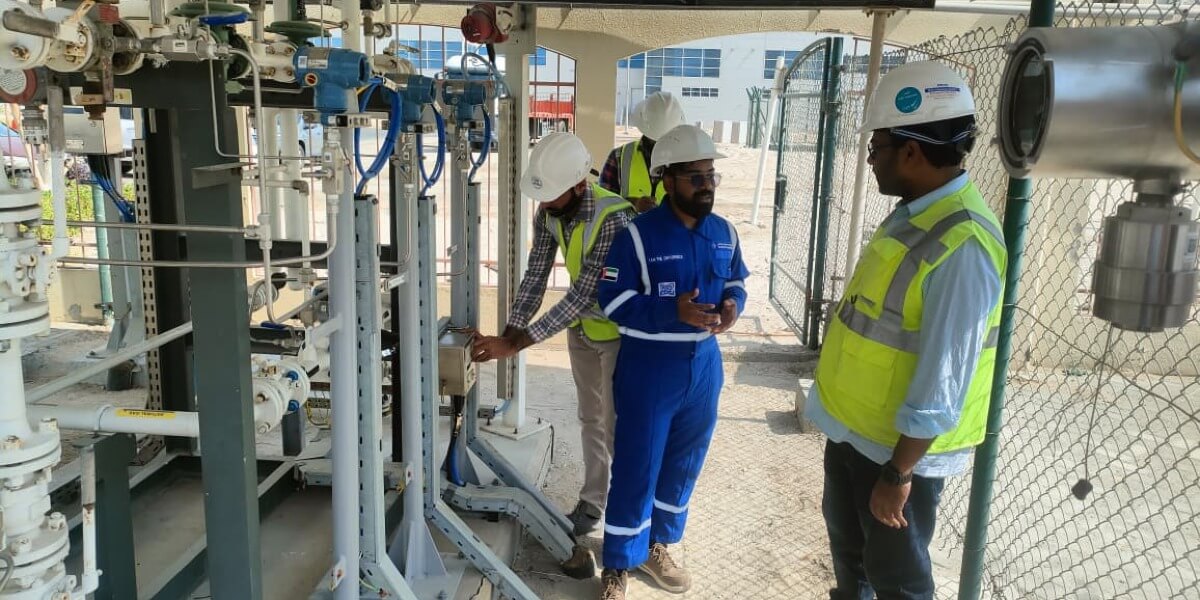The Future of Gas: Innovations Shaping the Energy Industry
The Future of Gas: Innovations Shaping the Energy Industry

Gas in the Energy Transition
As the world accelerates toward net-zero goals, renewables like solar and wind often dominate the conversation. Yet, natural gas remains a key pillar in the global energy mix — providing reliability, scalability, and lower-carbon advantages compared to coal and oil.
For many economies, gas is not only a “bridge fuel” but also a foundation for innovation in clean energy technologies. From hydrogen production to smart infrastructure, the gas industry is evolving rapidly to meet the challenges of sustainability and energy security.
Key Innovations Transforming the Gas Sector
Green Hydrogen from Natural Gas
Hydrogen is widely seen as the fuel of the future. With blue hydrogen production — where natural gas is used with carbon capture — the industry is creating pathways to produce hydrogen at scale while reducing emissions. This approach positions gas as a cornerstone of the emerging hydrogen economy.
Carbon Capture, Utilization & Storage (CCUS)
CCUS technology enables industries to capture CO₂ from gas combustion and either store it underground or repurpose it in industrial processes. Major projects in the Middle East and North America are already proving its potential, making natural gas significantly cleaner.
Smart Gas Infrastructure & IoT Monitoring
Digital transformation is reaching the gas sector. IoT-enabled sensors, AI-driven monitoring systems, and predictive analytics are helping utilities detect leaks, optimize supply, and enhance safety in real-time. Smart infrastructure reduces waste and improves efficiency.
Advanced LNG Transport & Storage Solutions
Global gas demand is rising, and so is the need for more flexible and efficient LNG infrastructure. Innovations in cryogenic storage, floating LNG terminals, and modular systems are enabling gas to reach new markets faster and at lower costs.
Hybrid Energy Systems
A growing trend is the integration of gas with renewables — combining solar or wind with flexible gas-powered plants. This hybrid model ensures energy reliability while lowering carbon intensity, making it an attractive solution for markets balancing sustainability and demand growth.
Global & Regional Perspectives
Middle East: Countries like the UAE and Saudi Arabia are investing heavily in blue hydrogen, CCUS, and LNG expansion projects, positioning the region as a global hub for energy innovation.
Europe: Driven by stringent climate policies, Europe is advancing green hydrogen projects and renewable-gas hybrids, pushing utilities to decarbonize faster.
Asia: With surging energy demand, Asia is leading in LNG import infrastructure and exploring hybrid systems to support industrial growth while reducing coal dependence.
North America: Significant investments in CCUS projects and digital gas monitoring systems are reshaping how utilities manage emissions and efficiency.
This global shift illustrates that innovation in gas is not confined to one region — it’s a shared evolution across continents.
Challenges & Opportunities Ahead
While innovation is reshaping the industry, challenges remain:
- Sustainability pressures – Gas must reduce its carbon footprint to remain relevant.
- High costs of new technology – CCUS and hydrogen infrastructure require heavy investment.
- Regulatory uncertainty – Policies vary widely between regions, impacting adoption speed.
- Market volatility – Shifting global demand and geopolitical risks influence gas trade.
However, these challenges also present opportunities. Companies that invest early in cleaner technologies, digital systems, and collaborative partnerships will be best positioned to lead the market.
The Road Ahead: Gas in the Next Decade
The next 10 years will define the role of gas in the global energy transition. Expect to see:
- Wider adoption of hydrogen production technologies linked to natural gas.
- Expansion of smart gas infrastructure across urban and industrial sectors.
- LNG continuing as a flexible, scalable solution for global markets.
- Governments driving carbon-neutral policies that accelerate CCUS adoption.
- Stronger integration of gas with renewables in hybrid power systems.
Far from being phased out, natural gas is evolving into a smarter, cleaner, and more versatile energy solution.
Innovation as the Key to a Sustainable Gas Future
The future of gas is not about standing still — it’s about transformation. Through hydrogen, CCUS, digital monitoring, and hybrid systems, the gas sector is reinventing itself as a critical enabler of a sustainable energy transition.
The journey will require collaboration between governments, businesses, and technology innovators — but the path forward is clear: innovation will keep gas at the heart of the global energy mix for decades to come.
The energy industry is entering its most dynamic phase yet. By embracing change today, businesses and policymakers can shape a future where gas and renewables work hand in hand for a cleaner tomorrow.











